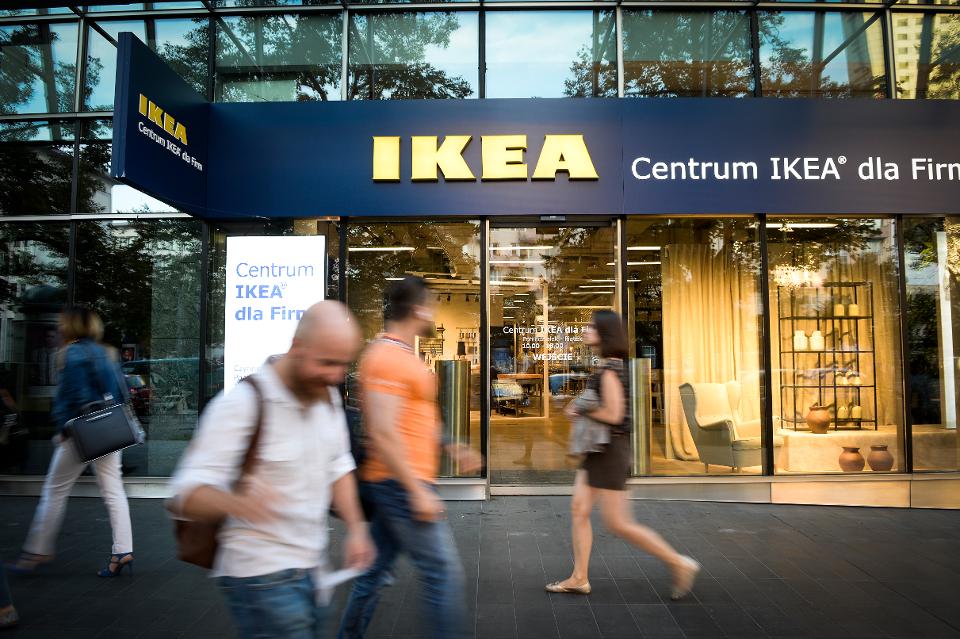IKEA has been experimenting with moving away from its iconic, labyrinthine big box store format to make its furniture shopping experience fit with the lifestyle of today’s city dweller. Now the chain is opening a store in the E.U. that will bet big on serving a customer base of pedestrians, cyclists and public transportation commuters. The location will offer no place to park a car.
The store in Vienna, Austria, which connects directly to the city’s subway station, promises that all items too big to carry will be home delivered within 24 hours, according to an article on urban design blog Treehugger. It will nevertheless be a large store, however, consisting of several floors and displaying the entire Ikea range. There are some additional contemporary design features as well, including greenery on all facade surfaces and a publicly accessible roof terrace.
In an online discussion last week on RetailWire, some BrainTrust panelists such as Suresh Chaganti, executive partner at VectorScient, saw the plan offering a potential foundation for new creative approaches to delivery.
“Good move,” wrote Mr. Chaganti. “This certainly opens up possibilities in the dense downtown areas in the U.S. IKEA could set stores up to be see and select, letting customers pick up from another IKEA near home or get product shipped. Delivery could be free at some threshold. In addition, category assortment could be specific to such location, focusing on large items that will be delivered or shipped anyways.”
Young generations want the convenience without the sweat …
And many on the expert panel noted that it makes sense in the context of numerous different demographic trends.
Read Also: Facebook Results Beat Forecasts But Shares Take A Hit
“The multi-generational return to urban cores makes this type of store a great fit for U.S. metro areas,” wrote Michael Terpkosh, president at City Square Partners. “As Baby Boomers retire, they don’t want to have to lug around big, heavy boxes — especially if they can get delivery and set-up. Young generations want the convenience without the sweat and without driving to the store. I see this as a win-win for all parties.”
“If IKEA (and any other retailer) can consistently deliver as promised, the urban stores can thrive without parking lots or garages,” wrote Bob Amster, principal at Retail Technology Group. “As pointed out in another RetailWire discussion today, trends are changing. Today’s labor force wants to live in urban areas, ditch the automobile, walk or take public transportation. That all spells out that even retailers of furniture can do business in urban areas and everybody (the consumer, the retailer and the environment) wins.”
Its announcement of the parking lot-free location comes two years after IKEA began implementing its urban strategy, which has focused on building stores that are smaller and geared toward life in cities with a greater focus on delivery and related services.
The “green” elements of the store design, along with a setup that empowers customers to shop without a car, are also in keeping with the chain’s new environmental stance. IKEA has a comprehensive plan to reduce its carbon footprint that will change every aspect of its business, including how it designs its products (which are often thought of as disposable), according to Fast Company. The chain plans to be “climate positive” by the year 2030.
Some cautioned, though, that a delivery-focused concept shouldn’t come at the expense of what has already long worked for IKEA and its customer base in environments other than urban ones.
“Consumers go to IKEA because we can take what we buy home with us that day,” wrote Georganne Bender, principal at Kizer & Bender. “You can’t get near the IKEA closest to my house, especially on weekends, because the parking lot is always full to capacity. I get that IKEA is trying to help the environment, and I applaud that, but that’s not how people shop here. Why mess with success?”
“Maybe there could be an intermediate format that would still offer the best of this format and the best of the 300,000 square foot format,” wrote Richard Hernandez, director at Affiliated Foods.
FORBES

